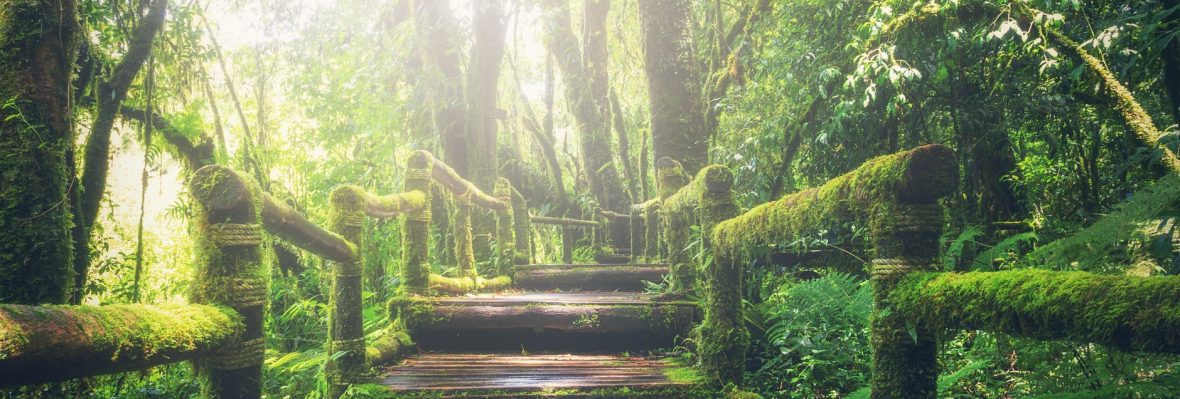We can plant trees to re-establish a woodland community, but does planting trees help other elements of the community recover? What about the microbial community, it is responsible for much of the ecological functioning of intact ecosystems. Does restoration help the microbiome and why should we care?
Ecological restoration is a globally important and well-financed management intervention used to combat biodiversity declines and land degradation. The recent formation of the Intergovernmental Platform on Biodiversity and Ecosystem Services (IPBES) draws attention to the key role restoration has in combating these global issues.
In 2011, the Global Partnership on Forest and Landscape Restoration, a worldwide network of governments and action groups, proposed The Bonn Challenge, which aims to restore 150 million hectares of degraded land by 2020. This target was extended to 350 million ha by 2030 at the September 2014 UN climate summit in New York. At the 2015 Paris climate talks, African nations committed to a further 100 million ha of restoration by 2030. The success of these impressive commitments will rely on delivering effective restoration interventions, and these interventions desperately require integrated monitoring and policy support.
Most restoration aims to increase biodiversity towards a reference state, but there are concerns that intended outcomes are not being reached. This may in part be due to unsuccessful interventions (e.g. reduced fitness or low establishment rates) or land use legacy issues (e.g. disturbance, nutrient loads from past fertilizer use and habitat fragmentation). However, many projects remain insufficiently monitored and cannot provide evidence-based management options needed to improve outcomes.
Identifying and monitoring biodiversity recovery is therefore an important part of delivering successful restoration. Traditional field-based monitoring focuses on terrestrial macro-organisms (e.g. plants, birds), vegetation regrowth (e.g. growth, biomass), or subjective classification (e.g. land condition, vegetation cover). All of these are logistically demanding, hard to standardise, and largely discount the microbial community (the microbiome).
The microbiome is the foundation of many ecosystem functions and services (e.g. nutrient cycling). So being able to quickly and easily monitor the microbiome could be a cost effective and simple way to track the functional return of restoration projects.

High-throughput amplicon sequencing of environmental DNA (otherwise known as metabarcoding of eDNA) has been proposed as a cost-effective, scalable and uniform ecological monitoring solution. Little prior knowledge is needed to identify a representative suite of species within a focal taxon. Also, unlike orthodox field methods, it can provide a more accurate picture of diversity, by targeting focal species groups, such as bacteria and fungi, but its application to restoration remains largely untested.
Our recently published study in Molecular Ecology used metabarcoding of eDNA to describe the bacterial community turnover across 10 years of revegetation at Mt Bold Reservoir in the Adelaide Hills, South Australia.
We showed that the bacterial community of an old field (grazed for over 100 years) recovered to a state similar to that of remnant habitat following native plant revegetation. These dramatic changes occurred after just 8 years of revegetation, where the bacterial communities at younger sites were more similar to the old field sites and older restoration sites were more similar to uncleared native vegetation. Despite the sites having a long and dramatically altered land use history (i.e. >100 years of grazing), biodiverse plantings had a strong positive influence on the below ground bacterial community.

Interestingly some microbial groups showed strong patterns. For example, Acidobacteria increased with restoration age. This trend is supported by previous work that found Acidobacteria are more abundant in forest and grassland soils rather than degraded soils. Conversely Firmicutes declined in abundance with restoration age. Firmicutes include the Clostridium group and other well-known human pathogens. So it is possible that restoration outcomes could be linked to human well-being.
Identifying the rapid microbial community turnover in this restoration project (i.e. after 8 years) could not have been achieved within conventional monitoring. With further development, metabarcoding of soil eDNA presents a significant opportunity to improve practice and inform policy by identifying departures from desired restoration project outcomes.
Effective monitoring tools that can accurately assess the trajectory of restoration interventions will be essential to optimize the practices used in the roll-out of the enormous projects forecasted in The Bonn Challenge.
So we should care, and restoration is important because it might just help to make the microbiome great again!
Article written by Nick Gellie, Jacob Mills, Martin Breed, Andrew Lowe
Paper: Gellie NJC, Mills JG, Breed MF, Lowe AJ (2017) Revegetation rewilds the soil bacterial microbiome of an old field. Molecular Ecology, Published online. 8 April 2017.


One comment